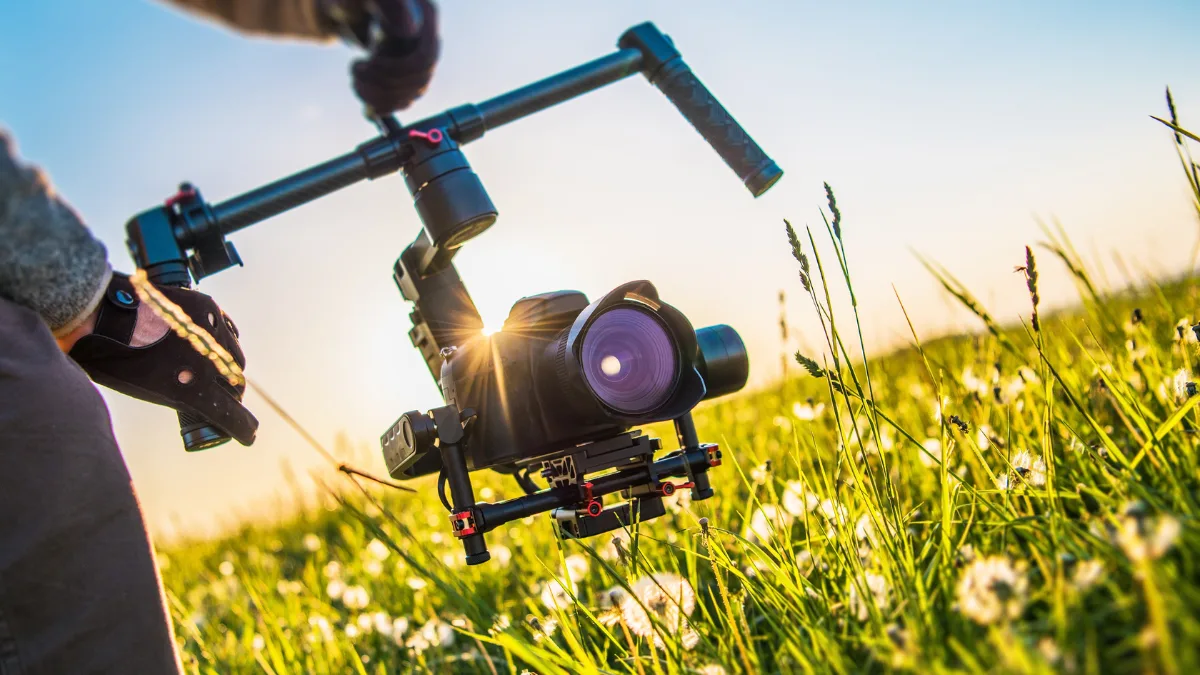For those of you who often create video content, you surely know how important it is to use a gimbal stabilizer to keep the image stable. There are many types of this tool with different features and functions.
By knowing the types of gimbal stabilizers, you can consider the features and functions before buying one. So you won't make the wrong purchase when you only need it for daily use but end up choosing a device intended for professionals, or the other way around.
This article will discuss the types of gimbals available on the market. Let's take a look so you don't make the wrong choice when buying one!
The Types of Gimbal Stabilizer

Basically, gimbals are divided into three types, namely based on the axis, the device used, and the working mechanism. Here is an explanation of each type:
Gimbals based on the axis
As the name implies, this gimbal works according to the number of axes it has. You can choose the number of axes according to your needs.
1-axis gimbal
Stabilizes movement with only one axis, usually the tilt axis (up-down). This gimbal is suitable for beginners who need a lightweight and inexpensive tool. However, the video results are still not as smooth as those produced by more complex gimbals.
2-axis gimbal
Stabilizes movement with two axes, tilt and roll (left-right tilt). Suitable for those who want to upgrade from a 1-axis gimbal with a size that is still compact for on-the-go use. However, you will still feel shaking in the pan (left-right movement).
3-axis gimbal
Stabilizes movement on three axes: tilt, roll, and pan. With this gimbal, all vibrations can be reduced. It's no surprise that this is the most popular choice. Although it is relatively expensive, the features it offers are worth it. Suitable for those who want to get more serious about video.
Gimbals based on the working mechanism

In addition to the number of axes, gimbal stabilizers can also be distinguished by their working mechanism.
Handheld gimbals
Handheld gimbals are gimbals that are held directly in the hand. This type is considered practical and lightweight for everyday activities such as vlogging, TikTok, or light shooting. Handheld gimbals are usually designed for smartphones, mirrorless cameras, or action cameras.
Mounted gimbals
Mounted gimbals are typically installed on vehicles, drones, or camera rigs. This type is heavier, as it is intended for professional production needs. Not only that, but using this device also requires more technical knowledge for its operation.
Gimbals based on the device

Other types can be distinguished based on the device they are paired with. Here is the explanation:
Mirrorless/DSLR camera gimbals
Mirrorless/DSLR camera gimbals are designed to be larger and stronger to support heavy loads. Some models are even designed for professional needs and can be customized with follow focus or additional screens.
Action cam gimbals
Action cam gimbals are specifically designed for those who enjoy extreme activities. This type of gimbal is specially designed to be impact-resistant and remain stable when used for sports or outdoor adventures. So, when you're moving around in the great outdoors, the resulting video will remain stable.
Smartphone gimbals
Smartphone gimbals are designed to be small and lightweight. Even so, these gimbals have smart features such as face tracking and slow motion mode. They are perfect for those of you who often create content using your cell phone.
These are the types of gimbal stabilizers based on their axes, the devices they are used with, and their operating mechanisms. By understanding the different types, you can make an informed decision before purchasing one.
Whether you want a simple one for daily vlogging or a sophisticated one for professional use, it all depends on your needs. The important thing is to choose one that is compatible with your device and comfortable to use. Make sure you choose the right one!